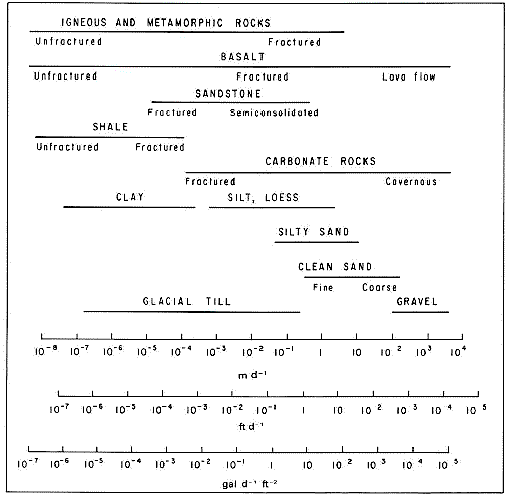How easily water moves in soil depends on how big the soil pores are, how well they are connected, and how wet they are
Hydraulic conductivity is the term used to describe how easily a fluid moves through a porous medium. In the case of water infiltrating into soils, the fluid is the water and the porous medium is the soil. We often use K to represent hydraulic conductivity when we are writing equations.
When all of the soil pores are full of water, we call this saturated hydraulic conductivity, Ksat. Saturated hydraulic conductivity is a function of how big and how well connected the soil pores are. In general, soils with lots of smaller particles (silts, clays) have smaller and less well connected pores than soils with lots of larger particles (like sands). Therefore, sandy soils have higher K than silty and clay-rich soils (even if they have less total pore space).
The difference in K can be several orders of magnitude:

Image from: Heath, R.C., 1983. Basic ground-water hydrology, U.S. Geological Survey Water-Supply Paper 2220, 86p. (Public domain)
Across the full range of rocks and sediments, we can measure K over a range of 12 orders of magnitude (an order of magnitude is a factor of 10). Across a typical range of soils, K might vary by 4-5 orders of magnitude. That means that water can flow 10,000 times more easily in some soils than others.[Isn’t that mind-blowing?]
But in all soils, water moves more easily when all of the pores are water filled (Ksat) than when some pores have air in them (Kunsat). Why is that? This video explains…
Curious about the figure in the upper left part of the screen at the beginning of the video? Here’s a video that explains the soil characteristic curves for wetting and draining:

